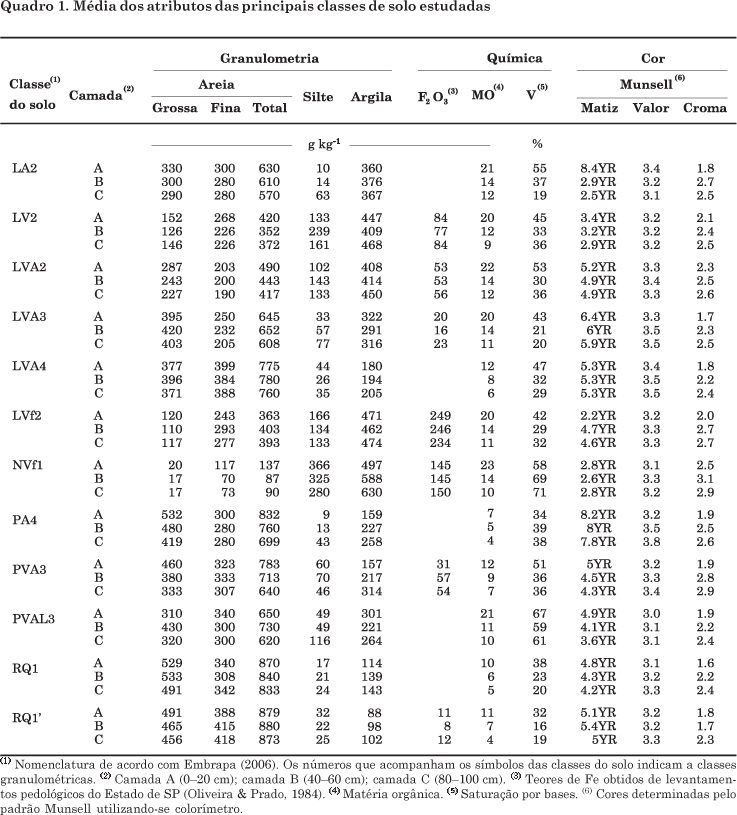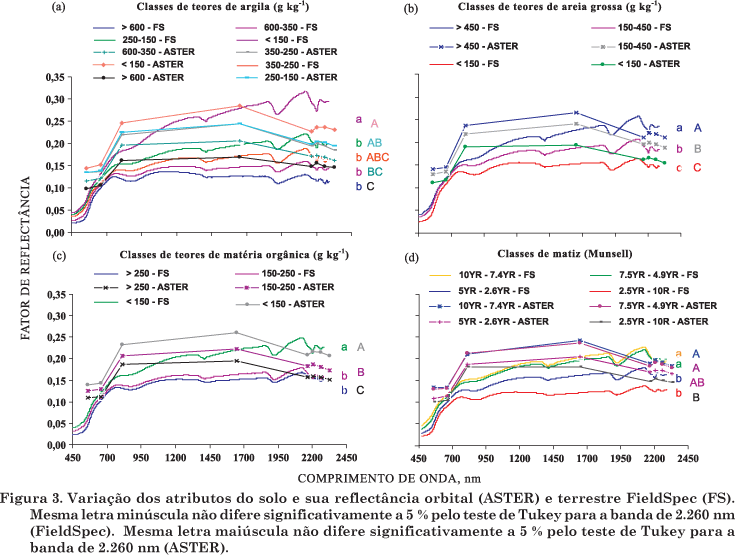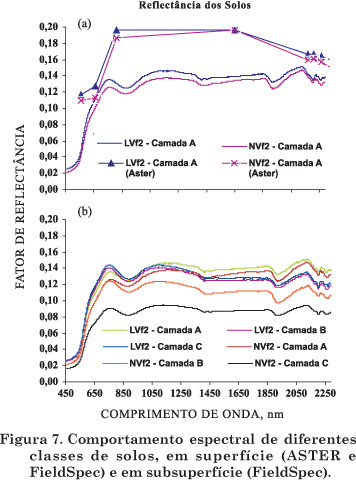Part of agricultural production index variability is associated with soil and landscape characteristics. Management practices such as fertilizer application should therefore take the soil spatial variability into account. Remote sensing is a tool that can provide faster information for soil management because it relates electromagnetic radiation with soil attributes. Thus, this study aimed at evaluating the spectral response, at two data acquisition levels (terrestrial and orbital), of different soil classes across toposequences in the region of São Carlos and Ibaté, SP. For this purpose, georeferenced soil samples were collected at 319 points and three depths, and radiometric data were obtained in the laboratory using a spectroradiometer (spectral band 450-2500 nm). The same points sampled in the field in the surface layer were evaluated by the satellite image (ASTER). Based on the results it was possible to conclude that (a) coarse sand, clay, organic matter and color were strongly related with soil reflectance; (b) soil spectral data vary along the declivities; (c) soils of the same taxonomy order, but of different clay classes, have different spectral performances and can be discriminated by remote sensing.
topossequence; soil attributes; reflectance









